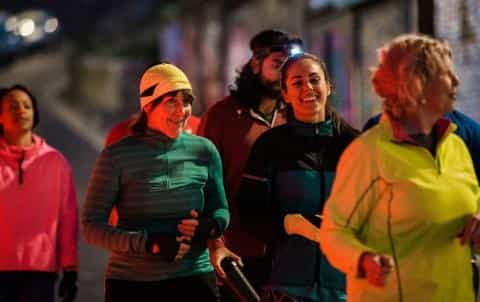
A marathon pacer is an experienced runner who sets a steady pace to help others achieve a target finish time. Found at most major races, pacers can be incredibly useful for runners aiming for personal bests, Boston Qualifiers, or simply a steady effort. But is running with a pacer always the right choice? Here’s a look at the pros and cons.
✔ Consistent Pace: Pacers are trained to maintain an even effort, helping runners avoid starting too fast or slowing down too soon.
✔ Mental Boost: Running in a group with a pacer can provide motivation and a sense of community.
✔ Reduced Stress: Instead of constantly checking your watch, you can focus on running while the pacer takes care of the pacing strategy.
✔ Wind Blocking: Running behind a pacer in windy conditions can reduce energy expenditure, helping conserve strength for later miles.

❌ One Pace Doesn’t Fit All: If the pacer’s effort feels too fast or too slow, sticking with them can either burn you out or hold you back.
❌ Unpredictable Factors: Not all pacers are perfect—some may go out too fast, struggle late in the race, or fail to account for hills and weather.
❌ Crowding Issues: Popular pacers often attract large groups, making it harder to run your own race.
❌ Less Flexibility: If you need to adjust pace due to fatigue, running with a pacer might pressure you to push beyond your comfort zone.
Pacers are great for runners aiming for even splits and specific time goals, but they aren’t always necessary. If you prefer running by feel, adjusting pace as needed, or following your own strategy, you may be better off pacing yourself.
Ultimately, the best approach is to know your race plan, test pacing strategies in training, and decide whether a pacer aligns with your goals.
Discover More Content





